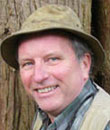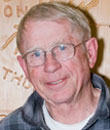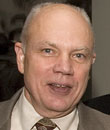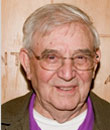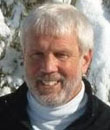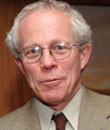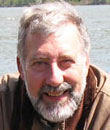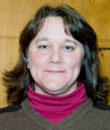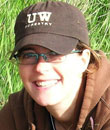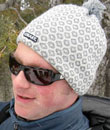 |
|||||||||||||||||||||
| Forest Resources Home | News | Make a Gift | UW Alumni | |||||||||||||||||||||
|
April 2010 | Return to issue home
Letter from FRAA President Tom Hanson Another great academic year is about to end, and the FRAA welcomes new graduates into our ranks. Here are some opportunities to get in touch, come back to campus and connect with current students and recent graduates: Wednesday, May 19–Husky Happy Hour Saturday, May 22–Centennial Grove Service Day and FRAA Meeting Friday, June 11–SFR Graduation We are now on LinkedIn! At a recent meeting of the FRAA board, we were reminiscing about the fantastic field experiences and mentoring that we enjoyed while students. As many of you know, the opportunity to get out and do hands-on work with faculty and resource management professionals is a defining characteristic of the School of Forest Resources. Students receive lifelong benefits from field experience that are impossible to match in a classroom. I frequently visit Anderson Hall, and it is great to see that SFR students continue to seek out and participate in fieldwork and summer employment opportunities that give them real-life experience. Many of our current and past board members have great stories and perspectives to share, so we decided to make them available to you here. If you have some of your own, won’t you please send them in? We would love to hear how field work and mentoring made a difference in your career and life. I’ll get things started with my story, and look forward to hearing from you! Tom Hanson, president
Tom Hanson, ‘71: Being of strong body and armed with my 1971 forestry degree, I knocked persistently on the door of the company I now own. They gave in and hired me with that credential plus my desire to always do my best. Ken Beil, Perry Donaldson, Gordy Graham and, for a while, Alan Randall—all Huskies—mentored me through the early years. Oh, there were bear encounters, cougar sightings, hikes out of the end of the cruise line after dark…but mostly there was teaching, or mentoring, if you will, and instilling pride in doing what they did in forestry that they passed on. I now work with several young foresters and try to impress on them what was passed to me—pride, integrity and teamwork, and a never-ending desire to learn and build on that degree…those young knees don’t last forever.
Dale Cole, ‘55, ‘63: The extensive field experience I received as a student had a paramount influence on my decision to choose forestry as my professional, research and professorial career. I was privileged to spend a quarter at Pack Forest during my sophomore year when it was a curriculum requirement, and to participate in senior field trips, in summer employment with Scott Paper Co. as a part of an inventory crew involving faculty and students, and to work with UW faculty in research activities associated with atomic testing in the South Pacific. Not only did this student experience broaden my perspective of forestry and forest soils in their importance to the world around us, but developed a lifetime bonding with fellow students and faculty including Professors Gessel, Walker and Stenzel. It also left me with lasting memories, some serious and some hilarious. Watching a logger at Forks, Wash., deliberately dump a large serving bowl of soup in the lap of Professor Robertson’s son because he failed to follow the proper mess hall protocols on etiquette still gives me a chuckle. Many years later, as a college administrator, I had the occasion to meet Robertson’s son again. Being the shy, humble individual that I am, I resisted the temptation to ask him if he remembered that occasion as clearly as I did.
Bob Alverts, ‘66: After completing the summer quarter at Pack Forest in 1963, I worked for St. Regis Lumber Co. at their logging camp between Elbe and Morton, Wash. I worked for forest engineer and alum Don Schinnel building a road in the Little Rockies. I set slope and grade stakes and set chokers to help remove right-of-way logs. But the most fun was blasting stumps! I would drive a box of dynamite up the mountain in the old pickup, dodging loaded logging trucks coming down the hill, and then help the cat skinner "Choo Choo" blow up the stumps in the right of way. It was great fun!
Ben Harrison, ‘66: The summer of 1966 found me working on a research project for Weyerhaeuser at Klamath Falls, Ore. Our project was to update data on growth and yield plots established in 1912. In late August we (my co-worker Chet, my dog Skagit and I) were working the west block of Weyerhaeuser’s tree farm and were told to look out for rattlesnakes, especially after 2 p.m. because that’s when the snakes become active and move about. We started our last plot for the day after lunch and noticed snake trails in the soil. We also noticed that Skagit became more protective and we soon knew why—a large snake was in our plot. We killed it and placed it on an stump to retreive later (I wanted to skin the rattler and make a hat band). We completed our work and returned to the stump to pick up the snake but no rattler was there. Chet claimed that rattlers run in pairs and the mate had come and carried off the dead snake. By this time I was almost convinced he was right and we wasted little time returning to our vehicle. As we approached the car there was Skagit with our rattler hanging from his mouth. The snake skin was cured and became a hat band.
Tom Friberg ‘70, ‘76: While I ended up on the tree-using side of the industry, my initial intent was to be on the tree-growing side. Prior to starting as a freshman in forest resources I spent the summer on a fire crew in southwest Washington. I was there because I was going into forestry. A number of the others on the crew were there because they were given that option rather than serving hard time. But, it worked and we all did a great job.
Tom Hinckley, ‘71: In October 1967, relatively early in my graduate career at the College of Forestry, Gary Ritchie, a fellow graduate student, asked me to go with him to Pack Forest to take down some triangular TV towers that one of Professor Dave Scott's graduate students had erected to gain access to the upper crown of a dominant Douglas-fir. For some reason, which still puzzles me, I was at the top of the ninth 10-foot section of one of the towers and I was loosening the cable clamps that held the guy wires. As I watched the second guy wire leave, I had this instant recognition that I had made a very dumb mistake. The last remaining guy wire, instead of offering support, now began to pull on the tower. Fortunately, the tower crossed paths with the dominant and I exited into the crown. I made it down, the tower made it down and neither of us suffered broken joints or other parts. From that day on, I became devoted to using triangular TV towers to get into the crowns of trees—our record was 140 feet in an old-growth stand at Findley Lake.
Bob Dick, ‘74: I spent the summer of 1971 roaming the hills of Idaho’s upper St. Joe and Little North Fork of the Clearwater watersheds. We located section corners, ran section lines, worked on logging road engineering projects and did all the things that made us want to be foresters. Each section corner was a little mystery that had to be solved; every section line a journey through the past century. One Friday night we had a glorious time in the bunkhouse with lights on well past normal bedtime, enjoying some adult beverages. Very early Saturday morning we struggled into our clothes and headed to breakfast. After a misbegotten attempt at eating, it was off to the woods to locate two section corners with a mile of line to run in between the corners. We crawled out of the truck an hour later, and looked into a chasm, somewhere at the bottom of which lay our section corner. The trip down the hill was interminable, heads pounding, sweating, stomachs churning, legs burning. We could only imagine what it was going to be like coming up the other side. We located the corner and began the long climb up the other side of the mountain. Noon found us beginning to feel almost human, on top of a rocky peak, sun out, no bugs, light breeze and ever so grateful we had had enough foresight to pack lunches. We wolfed our sandwiches, watched jets pass high overhead and realized what normal people were missing on this glorious day in the woods. The rest of the day was routine. We located the uphill corner then began the long, two-mile hike out to the road and our rig. The sun was low on the horizon when we got back, our tummies banging on our ribs. Life was good. Going to bed early that night was even better. You couldn’t have forced me to change my major for any amount of money and fame.
Elaine Oneil, ‘03, ‘06: We were conducting an inventory of nesting bald eagles on some of the coastal areas of Vancouver Island and the Gulf Islands in British Columbia. The project was to inventory nesting pairs, count the chicks in the nest and inventory the forest around the nest with the eventual goal of identifying forest-based drivers for successful nesting habitat. The eagle counting was the peachy part—we flew the coastline in a helicopter, so while we were on the lookout for nest sites we were able to see some terrific country including some of the largest trees on the coast. The forest inventory part was a little more difficult because we had to hike into the base of the tree, take measurements and assess the surrounding vegetation. I recall one particular day where we literally crawled on top of salal that was 8 feet high and so thick it would actually support you if you didn’t try to stand up … about a half-mile of that and you know you’ve had a day.
Ara Kaufer Erickson, ‘04: It was a hot summer in the Sierra Nevada Mountains, and I was working with a Ph.D. student at UC Berkeley, Rolf Gersonde. We were spending days on end in a study plot for research on tree growth in multi-aged, mixed conifer stands and had a fervent competition going—the person who completed the most number of tree cores would get the last avocado, a highly desired food item when you are camping for a week! One day we realized that a bear was hiding in the shrubs near us. Although black bears are harmless, I was still anxious to remove myself from the area. The lure of the avocado, however, was too strong! I needed just a few more cores to have a chance at winning the tasty treat. We stayed. I don't think I won the avocado, but I still think of that hot summer every time I cut into one!
Matthew Weintraub, ’09: During my first season of field work for my master's degree, my equipment had the unfortunate fate of piquing the interest of a local black bear. When I arrived at my campsite with two field assistants in tow, we found that a bear had gotten to our food stash (which previously had been bear-bagged safely, or so I thought), meaning that we only had food for two more days. The next morning, upon arriving at my forest plots, we found the entire solar panel-to-battery power system had become a play toy for the bear, and was now strewn around the forest. Several of the sap-flow meters that I had installed were also ripped and chewed up. All combined, this damage effectively ended my field season two-and-a-half weeks earlier than originally planned. Through it all I did find some humor…the only food the bear didn’t manage to destroy was a plastic jar of honey, shaped like a bear. April 2010 | Return to issue home | |||||||||||||||||||||
|
|||||||||||||||||||||
